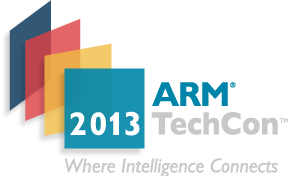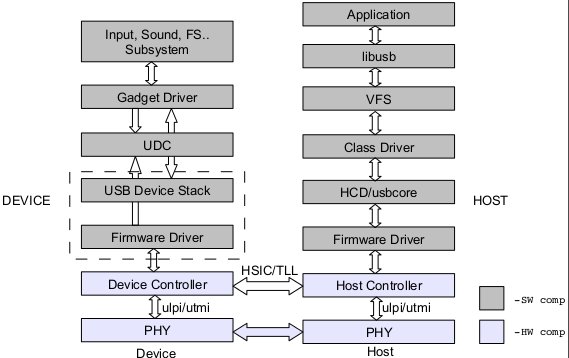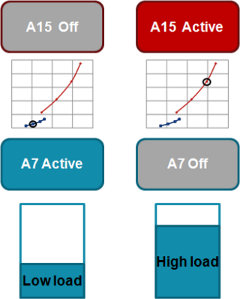ARM Technology Conference (TechCon) 2013 will take place on October 29 – 31, 2013, in Santa Clara, and the detailed schedule for the event has just been made available. In the previous years, the conference was divided into Chip Designs day (1 day), and the other 2 days were reserved for Software & System Design, but this year it does not appear to be the case. Whether you’ll be able to attend the event or not, it’s worth having a look at what will be discussed there in order to have a better understanding of what will be the key ARM developments in the near future in terms of hardware and software. There will be around 90 sessions categorized into 15 tracks: Accelerating Hardware Development – This track explores the resources, tools, and techniques that designers can employ to quickly bring hardware to market. Topics include multicore design, ARM IP, […]
Booting Linux in Less Than 1 Second in AllWinner A10 Devices? Yes! You Can!
threewater, a Chinese developer, has just posted a very interesting demo on linux-sunxi mailing list showing a device based on AllWinner A10 boot linux within 0.85s, and if you add a Qt app, the total time is just about 1.2s. This appears to be a custom hardware (EM6000), but we do know it’s based on AllWinner A10, comes with 512 MB RAM, and 4GB NAND Flash. On the software side, the device runs kernel 3.4 from linux-sunxi, with a customized version of uboot, a squashfs rootfs, and a Qt 4.7.4 app showing a gauge. Both the rootfs (7MB) and the kernel (2MB) have been compressed with LZO. All that boots from NAND flash for optimal speed. The 1.2 second time includes kernel + rootfs + app time, and the total time is a bit longer, but this is still impressive. Here’s the boot log:
|
1 2 3 4 5 6 7 8 9 10 |
[1.690000 1.690000] U-Boot SPL 2013.01-05984-g2120a27-dirty (Apr 17 2013 - 14:22:02) [0.009000 0.009000] Board: EM6000 [0.012000 0.003000] DRAM: 512MB [1.014000 1.002000] init startup v1.1 [1.016000 0.002000] mount usr data error 2 [1.158000 0.142000] Could not read calibration: "/data/etc/pointercal" [1.166000 0.008000] Couldnt open tslib config file: No such file or directory [1.175000 0.009000] QWSTslibMouseHandlerPrivate: ts_config() failed with error: 'No such file or directory' [1.187000 0.012000] Please check your tslib installation! [1.200000 0.013000] qt show |
If you just boot to […]
Embedded Linux Conference 2013 Schedule
The Embedded Linux Conference (ELC 2013) will take place on February 20 – 22, 2013 at Park 55 Hotel in San Francisco, California. ELC consists of 3 days of presentations, tutorials and sessions. There will be over 50 sessions during those 3 days. I’ll highlight a few sessions that I find particularly interesting, and that did not get presented at ELCE 2012 (AFAICR). February 20 11:00 – Anatomy of the arm-soc git tree by Olof Johansson, Google We are now two years into the new maintainer model for ARM platforms, and we have settled down into a workflow that maintainers have adjusted well to. Still, when new platforms arrive, or when maintainer ship changes hands, there’s sometimes a bit of ramp-up in getting used to how we organize our git tree and how we prefer to see code submitted to fit that model. This presentation will give an overview of […]
USB Debugging and Profiling Techniques – ELCE 2012
Kishon Vijay Abraham and Basak Partha, respectively software design engineer and tech lead at Texas Instruments, provide an overview of techniques that can be used to debug Linux USB drivers on the host PC or/and the device itself. Abstract: The widespread integration of USB into embedded applications presents many developers with the challenge of debugging problems, that are difficult to detect and isolate when a USB device misbehaves. This paper discusses about the various USB debugging techniques which includes debugging at the host PC, at the device and in the cable and discuss when each of the above techniques will be handy. This paper will also discuss about the various facilities provided within Linux kernel to aid in USB debugging e.g sysfs, trace points etc. and the various user space tools available to help USB debugging e.g USBMON. This paper also discusses about the profiling techniques at various levels in […]
Embedded Linux Boot Time Optimizations – ELCE 2012
Alexandre Belloni, embedded Linux engineer and trainer at Adeneo Embedded, gives a presentation about different techniques to optimize boot time for Embedded Linux at ELCE 2012. He also explains how they’ve measured the boot time. Abstract: A common problem faced when embedding Linux is the long boot time before the system is functional. There are many ways to improve boot up time. For a particular project, we had to answer a CAN message from Linux userspace in less than 420 ms from going out of CPU reset. We will describe our methodology and the techniques we finally chose to implement in that particular use case. We will also detail how we measured the boot time efficiently. A live demo will show the results of our work. More specifically, Alexandre discusses two projects at Adeneo where boot time was critical: An automotive platform based on Freescale i.mx53 needs to reply to […]
SoC Power Measurement with ARM Energy Probes and Linux EAP Tools
Andy Green, TI Landing Team lead at Linaro, gave an interesting presentation entitled “How to measure SoC power” at Linaro Connect Europe 2012. This talk was specifically aimed at software engineers, so that they know how to properly measure power consumption, and take actions to optimize the software to decrease it. In the first part of the presentation, he gives an overview of electronics basics with definition of voltage, load, current and power, units used for power measurements (Clue: you need to use Watts), and how voltage, current and power can be measured with voltmeters and ammeters. When you want to measure power in a rail, you would usually insert a shun resistor, use a multimeter and derive the power from the resistance and the measured voltage (P=V2/R). He also gives details about regulator efficiency, choosing measurement sampling… There are 4 common measurements strategies: DC IN – Easiest way, gives the complete […]
Big.LITTLE Processing Implementations and Current Status
There was a big,LITTLE mini-summit during Linaro Connect Europe 2012, where an update was given on current big.LITTLE implementations and the results of measurement of power vs performance. Big.LITTLE Processing Implementations Overview As briefly mentioned in “Versatile Express TC2 (2xA15, 3xA7) Development Board at ARM Techcon 2012“, there are 2 big.LITTLE implementations: In-kernel switcher (IKS) This implementation is already available through Linaro and only required minimal changed to the kernel as it mainly an augmentation to DVFS (Dynamic Voltage and Frequency Scaling) except instead of only adjusting voltage and frequency depending on the load, it will also move the load to different cores. The main drawback is that this implementation only uses half the cores. For example, on a 2x Cortex A15 / 2x Cortex A7 system, it can only use 2 cores at the same time (either A15 or A7 cores), as the load is managed between one type […]
IAR Systems Releases Embedded Workbench for ARM Version 6.40
Earlier today, IAR Systems has announced the release of version 6.40 of Embedded Workbench for ARM. This new version introduces several new features, enhancements and optimizations. The enhancements include a new source browser and text editor, with functionality such as auto-completion, code folding, block selection, block indentation, bracket matching, and zooming. Word/paragraph navigation have also been improved. IAR Systems also enhanced the compiler with improvements to the stack usage analysis functionality that provides calculations of the maximum stack depth for each call graph root and new features such as support for C++ source code and recursion. A new linker directive check can be used to calculate the stack usage at link time to verify that the used stack space does not exceed the allocated memory. The inline assembler has also been improved and expanded with a large number of new operand constraints and modifiers. In a previous post “Green Hills […]







